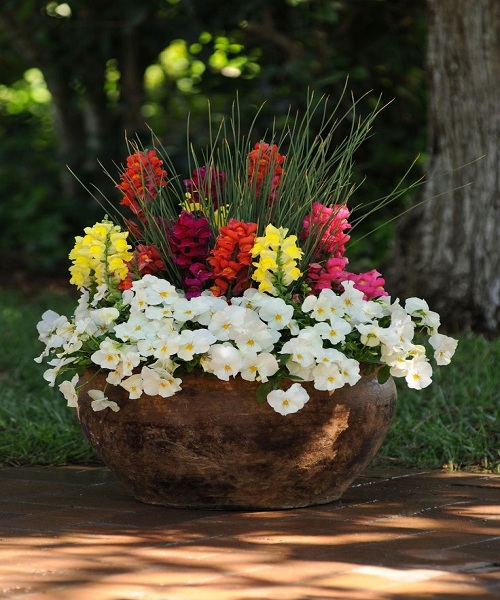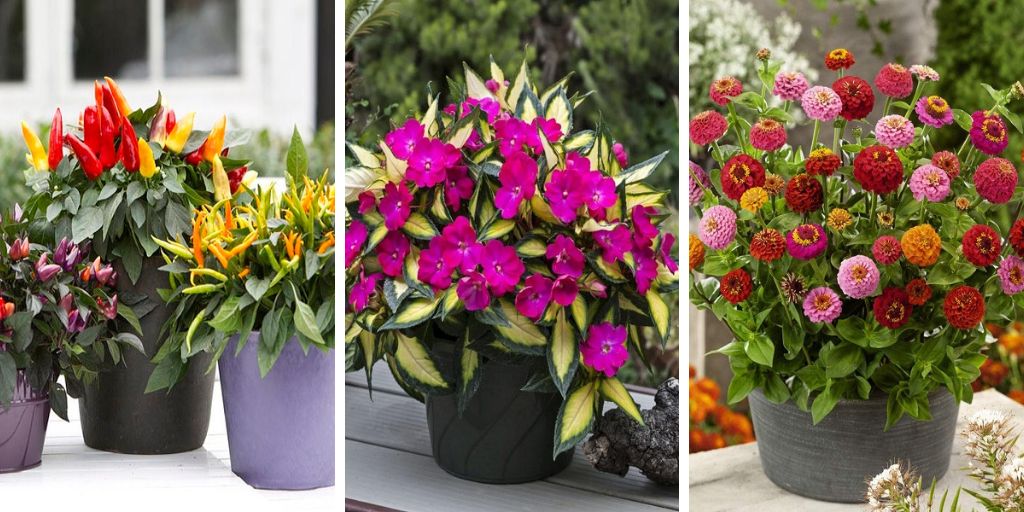When the air becomes cool and crisp, it’s time to refresh containers. As temperatures decrease, so do the number of summer plants that thrive in high humidity and heat. Thus, it is time to plant fall container gardens and get your hands dirty.
If you’re looking to add some color to your fall landscaping, check out this list of the best fall flowers to plant in containers.
Aster
These perennials have daisy-like flowers in shades of white, purple, blue, and pink that bring in pollinators like bees and butterflies. In late summer and early fall, you can see flowers blooming. You should read plant labels to determine whether your aster needs full sun or partial shade. Winter hardy in USDA Plant Hardiness Zones 4 through 8, asters can be grown in containers until they reach their full fall color potential and then planted in the ground.
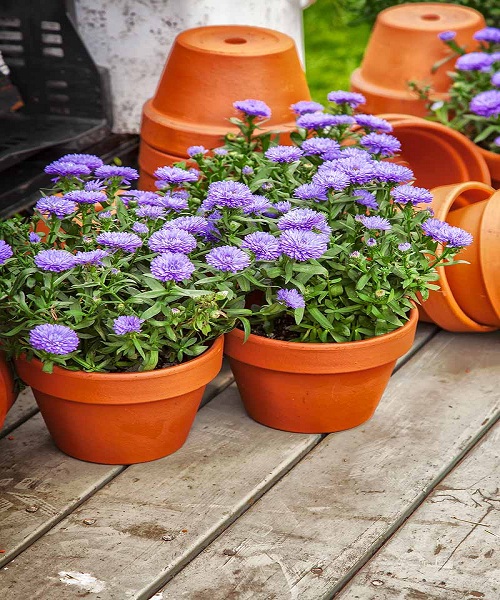
Begonia
Begonias typically have fleshy leaves and bloom in the summer and fall. Multiflora tuberous begonias, like the ‘Non-Stop’ series, have abundant, colorful flowers that bloom until frost. Grow in full or partial shade.
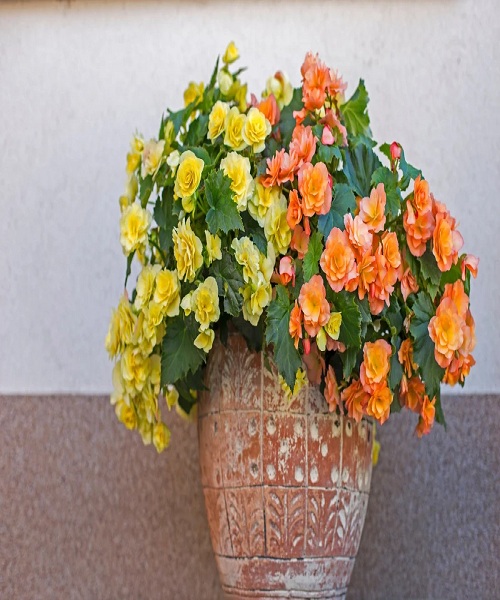
Chrysanthemum
In the South, mums are a sure sign that autumn has arrived. When October rolls around, it’s unusual to find a front porch without at least one potted mum. Mums prefer to be in the sun and receive consistent watering. It’s important to deadhead your mums to keep them looking their best.
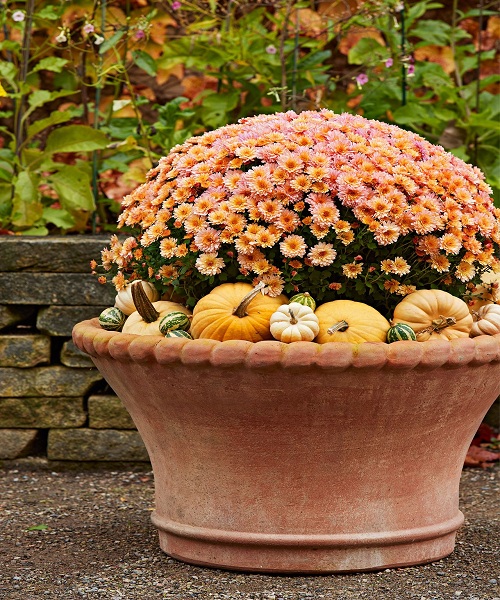
Autumn Crocus
There are several names for colchicums, including meadow saffron and autumn crocus, but they are actually members of the lily family. Cup-shaped flowers in shades of pink, lilac, or white bloom atop bare, leafless stalks (the foliage will appear later). Plant the bulbs late in the summer so they can grow and bloom in your containers by autumn.

Cosmos
The annual cosmo blooms from summer to fall because it loves the sun. The ferny foliage bears daisy-like flowers in red, pink, chocolate brown, yellow, orange, and gold. In addition, they bring in a lot of pollinators. After the first flower has opened, pinch the stems to shorten them and stimulate branching.

Globe Amaranth
These long-blooming flowers add color to a garden from summer to fall. They have rounded, clover-like flower heads in purple, pink, magenta, red, orange, and white. The plants themselves can survive periods of low rainfall, and many varieties thrive when placed in a sunny container.

Helenium
Heleniums, or sneezeweed, are a type of flowering plant that blooms in the summer and fall. These plants are ideal for autumn container gardening because their multicolored blooms, with dark centers, are in keeping with the season. These members of the daisy family require full sun and can attain heights of up to 3 feet.

Impatiens
Even if you planted impatiens in the middle of summer, many varieties will keep flowering until the first frost. Impatiens flowers come in a variety of eye-catching jewel-toned colors, including magenta, crimson, violet, pink, lilac, and white. They thrive in partially shaded or shady environments, making them ideal for container gardens.
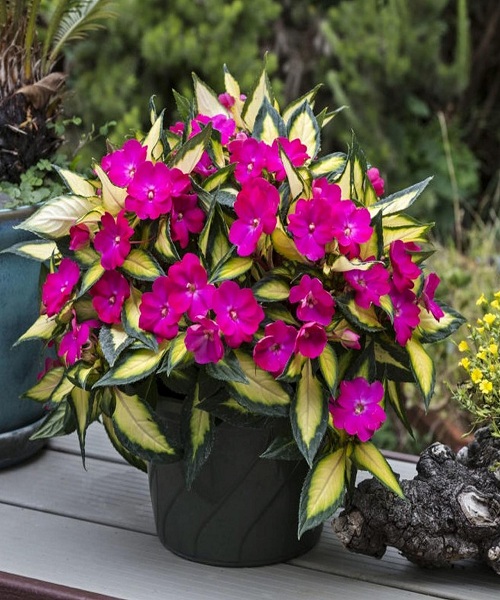
Marigold
Marigolds add a splash of joyful color to pots even after other annuals have stopped flowering for the season. In sunny areas, marigolds, especially French and African varieties, bloom profusely until frost. On November 1 and 2, they are utilized in the celebrations honoring the Day of the Dead.
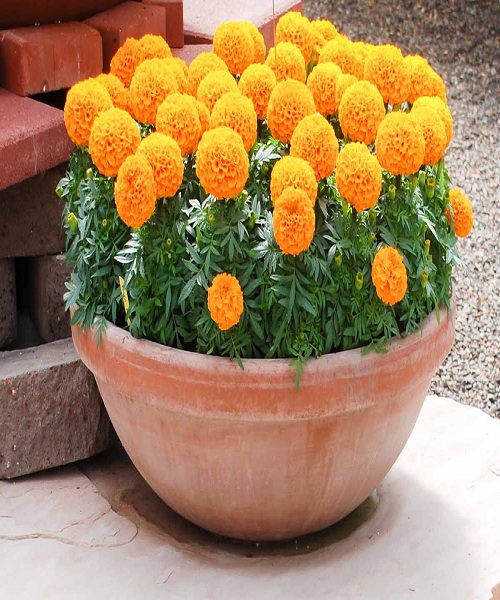
Pansy
Because of their inability to survive in high temperatures, pansies and their close relatives, violets and violas, are typically grown as annuals during the cooler months. They add fall and winter color to beds, containers, and borders. They are able to survive the colder months in the south, allowing for a second round of blossoming in the spring.
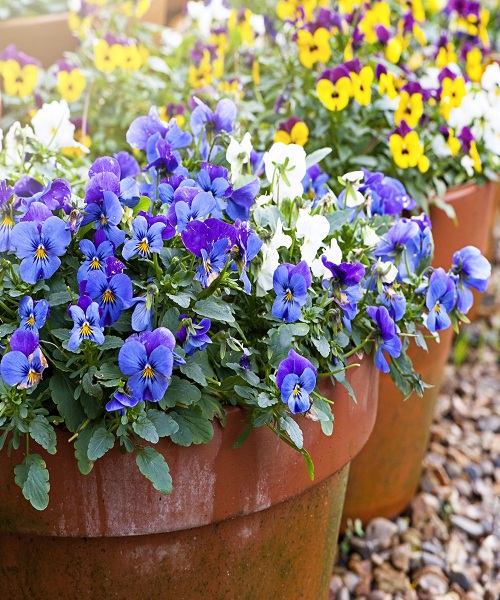
Petunia
Petunias can be grown as a winter annual in mild climates that rarely drop below freezing. If you plant them in containers in the autumn, you can enjoy them all through the fall and winter. When there is a sudden drop in temperature, bring your containers inside for the night to keep them from freezing.
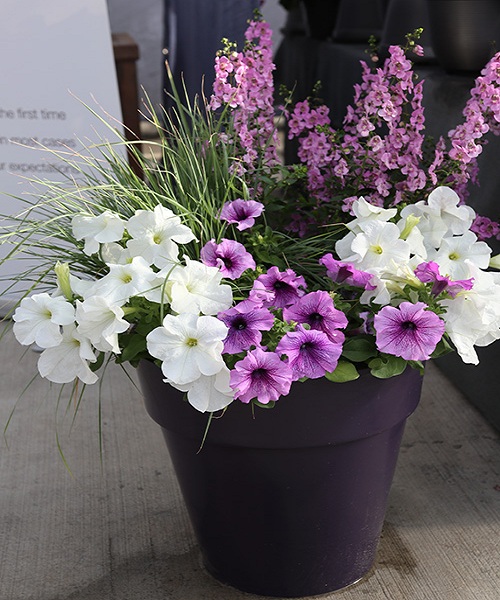
Zinnia
From spring until the first frost, these lovely bloomers produce bright flowers in red, pink, coral, white, and yellow. Even in the dry months of fall, zinnias can make a comeback in particularly humid climates. Put in direct sunlight and remove spent blooms to promote new growth.
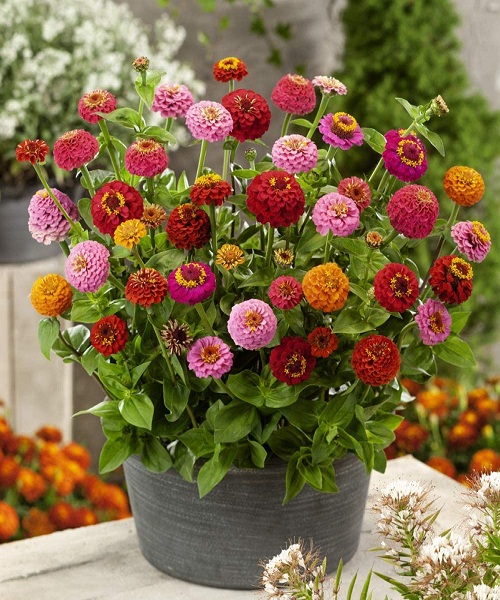
Crossandra
The crossandra, or firecracker flower, blooms from the end of August into early fall. With enough water, it can survive the sweltering temperatures that arrive toward the end of the growing season. Don’t pull it out until after the ground freezes. In this case, we teamed a spruce topiary with the fiery ‘Orange Marmalade’ firecracker flower.
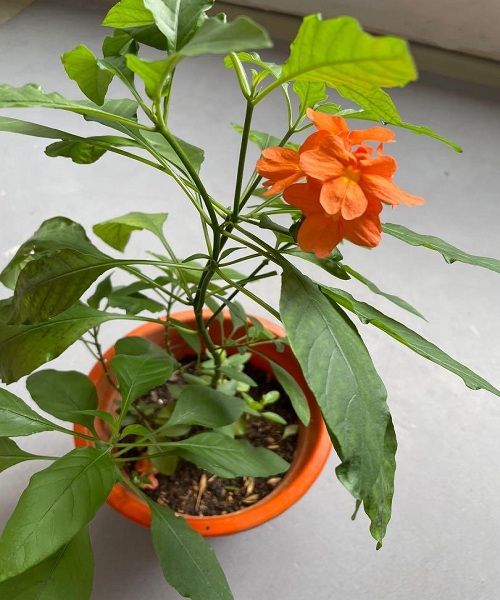
Echinacea
Coneflowers, which prefer full sun, bloom all summer long, right up until the first frost. If you want these perennials to bloom for a longer period of time, deadhead their spent blooms. Newer varieties come in sunset-inspired hues that are sure to brighten your containers, satisfying your craving for autumnal color.
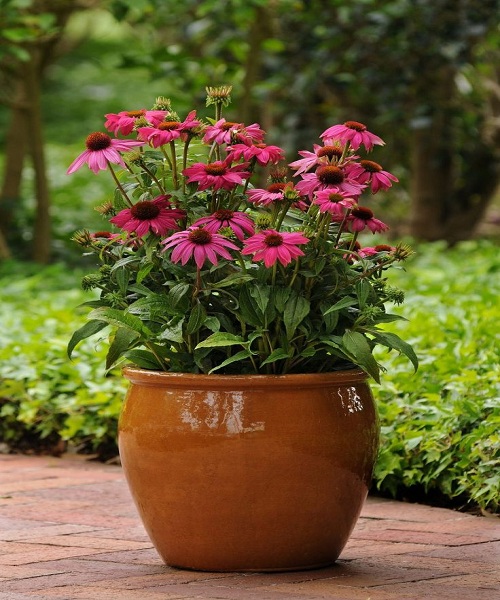
Ornamental Cabbage and Kale
These annuals thrive in containers and provide vibrant fall foliage color even though they are best grown in cooler climates. Provided they have access to well-drained, moist soil in full or partial sun, southern plants will thrive through the fall and winter months.
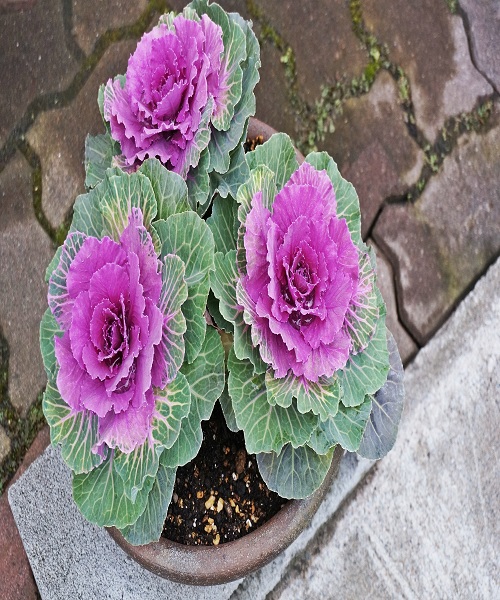
Ornamental Peppers
Use ornamental peppers to spice up fall containers. These colorful peppers can be grown in a sunny spot and come in a wide range of shapes, colors, and textures. They can even withstand the chilly autumn air without any apparent damage. These peppers can be picked and used for cooking up a storm right up until the first frost, but be warned: they are notoriously fiery.

Snapdragons
As you might have guessed after watching them burn in the summer heat, safflowers thrive in the cooler months. Right now is the perfect time to plant them in pots because they will continue to bloom long after most other flowers have died. When the temperature drops below freezing, put them in a sunny spot and water them more than usual. They will survive the winter and bloom again in the spring if you are in USDA Plant Hardiness Zone 7 or warmer.
